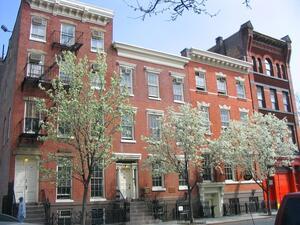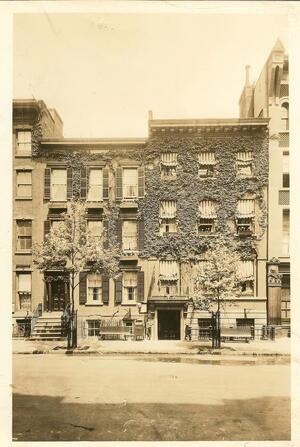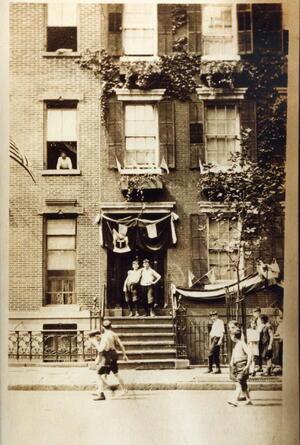Henry Street Settlement House
The Henry Street Settlement, co-founded in 1893 by affluent German Jewish American Lillian Wald, provided healthcare, education, and vocational training for the immigrant community on the Lower East Side. Wald was one of many middle-class progressive reformers who decried and set out to remedy the lack of social services for the poor. Wald worked tirelessly to aid garment workers, lobbying for workplace safety laws and more stringent fire regulations.
The Henry Street Settlement House began in a tenement at 27 Jefferson Street. Two years later, with a donation from philanthropist Jacob Henry Schiff, it moved to the home it occupies today at 265 Henry Street. Under Wald’s leadership, by 1903 the organization had expanded to several nearby buildings.
One of several settlement houses on the Lower East Side, the organization was an important resource for Triangle workers.
Henry Street not only provided direct services but also functioned as a political base for women, with the staff and volunteers helping female workers to unionize. Lillian Wald’s progressive politics extended to the rights of workers, especially women and children, as well as housing, trade unionism, and women’s suffrage.
She served on many committees to improve the lives
of immigrants, including one she persuaded the governor to form—the New York
Commission on Immigration. She also served as a mediator during garment strikes.
To improve workplace conditions, Wald served on the Joint Board of
Sanitary Control in the Cloak, Suit, and Skirt industry. By the time of the Triangle fire, the
commission had already investigated over 1,200 factories, recommending fire
safety and sanitation measures.
After the fire Wald demanded accountability
from officials stating, “The conditions as they now exist are hideous and
damnable. Our investigations have shown
that there are hundreds of buildings which invite disaster just as much as did
the Asch structure. The crux of the situation is that there is no direct
responsibility. Divided, always divided!
The responsibility rests nowhere!”
Today the Henry Street Settlement House
carries on Wald’s legacy, serving
as an important resource on the Lower East Side
by providing social services, arts, and health care programs to the
community.
Photograph below by Sari Weintraub, courtesy of Henry Street Settlement.






I grew up an impoverished dead end kid in public housing on the lower east side. In the mid 50's I attended folk/square dancing and hootenannies there. It was affordable, even in my circumstances, and provided good company. I've lived in Denver since'64 and these are still among my favorite activities in which I've met most of my friends. I find it interesting that Jewish women founded the house I grew up Catholic and morphed into Unitarian Universalism but almost all of my relationships have been with Jewish women - including my square dance partner of the last 15 years. I wonder what course my life would have taken without the influence of the Henry Street Settlement House.